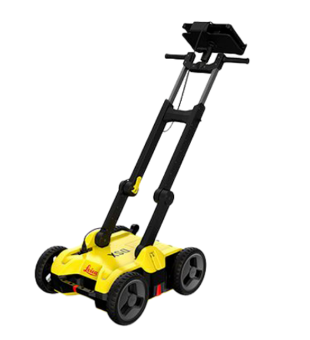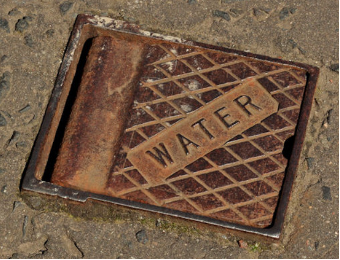Competency F2: Commission and Service Water Services and Distribution Systems
Learning Task 3
Describe the maintenance of water service and distribution systems
The maintenance of water service piping involves regular inspections, preventive measures, and necessary repairs to ensure the proper functioning and longevity of the piping system.
Maintenance Schedules
A maintenance schedule is a planned and organized approach to performing regular maintenance tasks and inspections on equipment, systems, or facilities. It outlines the frequency and scope of maintenance activities to verify that piping and equipment are properly maintained, optimized for performance, and prevent any future issues or breakdowns. Maintenance schedules can vary depending on the type of piping or equipment being maintained, but here are some elements typically included:
- Task List
- Frequency
- Responsible Parties
- Documentation
- Prioritization
- Resources
- Review and Updates
Regularly review and update the maintenance schedule to reflect any changes in equipment, usage patterns, or feedback from maintenance personnel. Continuous improvement ensures the effectiveness and relevance of the maintenance program.
Maintenance required for a water service piping system will vary, however, there are certain items that will be common to most. For example, regular flushing and cleaning of the water service piping to remove sediments, debris, or mineral deposits that may accumulate over time. Flushing the system helps maintain water quality, prevent blockages, and optimal flow rates. Dead ends in piping runs will be included in a maintenance schedule.
Implementing corrosion prevention measures to protect the water service piping from corrosion and deterioration. This can include applying protective coatings or linings to the pipes, installing sacrificial anodes or corrosion inhibitors, or implementing cathodic protection systems. This will require regularly inspecting and maintaining any corrosion protection measures in place.
Maintenance may also include conducting pressure tests to assess the integrity of the water service piping; pressurizing the system to a predetermined level and monitoring for any pressure drop that may indicate leaks or other issues. This test helps identify weak points in the piping system and makes sure it can continue withstand normal operating pressures.
Conducting regular visual inspections of the water service piping to identify any visible signs of damage, corrosion, leaks, or deterioration. Look for wet spots, discolouration, loose fittings, or any other abnormalities. Inspect both the exposed sections of the piping and areas that are concealed within walls, ceilings, or underground.
Inspecting and maintaining valves, fittings, and other components associated with the water service piping. Confirm that valves are functioning properly, exercise them regularly to prevent sticking, and repair or replace any faulty or damaged valves or fittings. Lubricate moving parts as needed.
AHJ
It is important to follow any local regulations, guidelines, and manufacturer recommendations regarding the maintenance of water service piping. Adhering to a proactive maintenance routine helps extend the lifespan of the piping system, prevents water loss, ensures water quality, and minimizes the risk of costly repairs or failures.
Tools and Equipment
Locating underground water service pipes can be a challenging task but there are several methods and tools available to help in the process such as the following:
- Utility drawings
- Electromagnetic pipe locators
- Ground penetrating radar (GPR)
- Pipe tracing equipment
- Water flow and leak detection
- Visual inspection and probing
Contact your local water utility or municipal department responsible for water supply. They often maintain records and drawings indicating the locations of water service pipes. These drawings may provide guidance on the approximate route and depth of the pipes.
Electromagnetic pipe locators (Figure 5) are specialized devices that can detect the presence of metallic pipes underground. They work by emitting an electromagnetic signal that is received by the locator when it passes over the pipe. This method is effective for finding metallic water pipes.

GPR (Figure 6) is a non-destructive geophysical method that uses radar pulses to create images of subsurface structures. GPR can help locate buried pipes, including water service pipes, by detecting differences in material density and composition. It is particularly useful for identifying non-metallic pipes like plastic or PVC.

Pipe tracing equipment utilizes conductive cables or rods that can be inserted into pipes. A transmitter is then used to send an electrical signal through the cables, allowing the user to track and trace the route of the pipes using a receiver. This method works well for metallic and some non-metallic pipes.
If there is suspicion of a leak in the water service pipe, use water flow and leak detection equipment to trace the path of the underground pipe. By monitoring water flow or using acoustic methods to listen for leaks, it can often identify the general area where the pipe is located.
In some cases, there may be the opportunity to visually identify signs of the underground water service pipes. Look for valve boxes (Figure 7), manhole covers, or other access points that indicate the presence of underground infrastructure. Additionally, probing the ground with a long rod or metal detector may help locate pipes if they are close to the surface.

Isolation
Proper and safe isolation is a non-negotiable when performing maintenance on a system. Never open valves or cut into pipes before it is confirmed that there is no risk for a blowout which can cause injury and costly water damage.
Before performing any shut down, inform the local water utility or service provider about your intention to take the water service line out of service. They may have specific requirements or procedures to follow. Find the main water valve that controls the flow of water to the service line. Use a wrench or valve key to turn the main water valve clockwise until it is fully closed and drain any remaining water. This step will also help relieve pressure in the system. If the water service line serves multiple properties or units, inform the occupants about the temporary interruption in water supply. Provide them with an estimated timeline for when the service will be restored. Always keep a record of the work done, including photographs if necessary.
Testing
Perform leak detection procedures to identify and address any leaks in the water service piping. This can involve monitoring water meters for unexplained increases in water consumption, using leak detection equipment, or conducting visual inspections of joints, connections, and fittings.
Implement and maintain appropriate cross-connection control measures to prevent contamination of the water service piping. Regularly inspect and test backflow prevention devices or other cross-connection control devices to verify they are functioning correctly.
Return to Service
If any portion of a water service distribution system has been shut down, drained, received repair or replacement, it must be returned to service to restore water supply. All work shall be accurately documented after piping is tested. Once the pipe reconnected, it is important to perform a pressure test and check for leaks. If the water service pipe is located underground, backfill the trench to code specifications. Install any necessary protective measures, such as insulation or sleeves, to safeguard the pipe from external factors. Notify all necessary parties that the water is back on, and accurately document the work performed.
Documentation
Documentation of the commissioning process is important. Documentation relies on the information being thorough, accurate, and accessible to maintenance staff. Using a template makes the information easy to understand by everyone. Information should be concise and clearly written. Keep all supporting documentation with notes along with the maintenance schedule. (Figure 8)

 Now complete Self-Test 3 and check your answers.
Now complete Self-Test 3 and check your answers.
Self-Test 3
Self-Test 3
Media Attributions
- Figure 5. “Electromagnetic pipe locator“ from Radiodetection Support is used for educational purposes under the basis of fair dealing.
- Figure 6. “Ground penetrating radar“ from Leica is used for educational purposes under the basis of fair dealing.
- Figure 7. “Stop valve cover“ by Albert Bridge is licensed under a CC BY-SA 4.0 licence.
- Figure 8. “Sample building maintenance schedule” by Maintenance Specialists is used for education purposes under the basis of fair dealing.
Image Descriptions
Figure 8. “Sample Preventive Maintenance Schedule” image description: An “x” indicates that the given preventive maintenance happens at the given frequency. [Skip Table]
| Preventive Maintenance | Daily | Weekly | Every 2 weeks | Monthly | Quarterly | Every 6 months | Annually | Every X Years | As Needed |
|---|---|---|---|---|---|---|---|---|---|
| Structures: Exterior Walls | x | ||||||||
| Structures: Brick and Masonry | x | ||||||||
| Structures: Arches | x | ||||||||
| Structures: Canopies | x | ||||||||
| Structures: Awnings | x | ||||||||
| Structures: Eaves | x | ||||||||
| Structures: Garage or Parking Lots | x | ||||||||
| Roofing: Tiles and Shingles | x | x | |||||||
| Roofing: Gutter | x | x | |||||||
| Roofing: Drains | x | x | |||||||
| Roofing: Wall Connections | x | x | |||||||
| Roofing: Solar Panels | x | x | |||||||
| Roofing: Leak Survey | x | x | |||||||
| Openings: Doors | x | ||||||||
| Openings: Windows | x | ||||||||
| Openings: Gates | x | ||||||||
| Lighting: Bulbs | x | ||||||||
| Lighting: Connections | x | ||||||||
| Lighting: Switches | x | ||||||||
| Lighting: Screws and Gaskets | x | ||||||||
| Electrical: Power Supply | x | ||||||||
| Electrical: Wires | x | ||||||||
| Electrical: Full Professional Inspection | x | ||||||||
| Plumbing: Irrigation System | x | ||||||||
| Plumbing: Water Heater | x | ||||||||
| Plumbing: Boiler | x | ||||||||
| Plumbing: Refrigerant | x | ||||||||
| Plumbing: Sewage Pumps | x | ||||||||
| Plumbing: Restroom Fixtures | x | x | |||||||
| Plumbing: Leak Survey | x | ||||||||
| HVAC: Cleaning | x | ||||||||
| HVAC: Pumps | x | ||||||||
| HVAC: Air Filter Replacement | x | x | |||||||
| HVAC: Condenser Coil | x | ||||||||
| HVAC: Energy Efficiency Check | x | ||||||||
| HVAC: Calibrate Sensors | x | ||||||||
| HVAC: Chillers and Boilers | x | ||||||||
| Fire Safety Equipment: Fire Extinguishers | x | ||||||||
| Fire Safety Equipment: Inspect Door and Crawl Spaces* | x | x | |||||||
| Fire Safety Equipment: Sprinkler Systems | x | ||||||||
| Fire Safety Equipment: Fire Alarms | x | ||||||||
| Fire Safety Equipment: Emergency Exit Signs | x | ||||||||
| Special Machinery**: Machine 1 | |||||||||
| Special Machinery**: Machine 2 | |||||||||
| Special Machinery**: Machine 3 |

